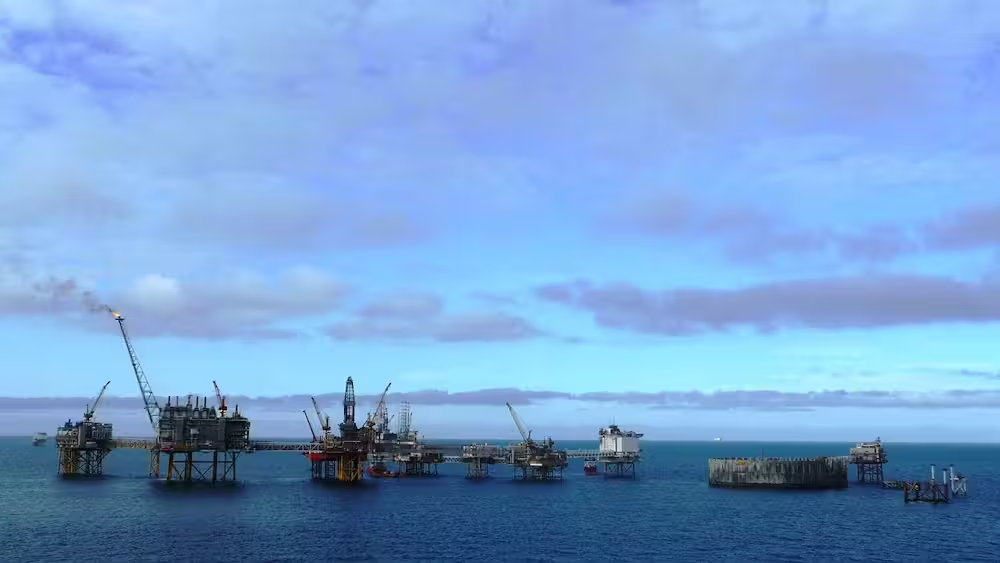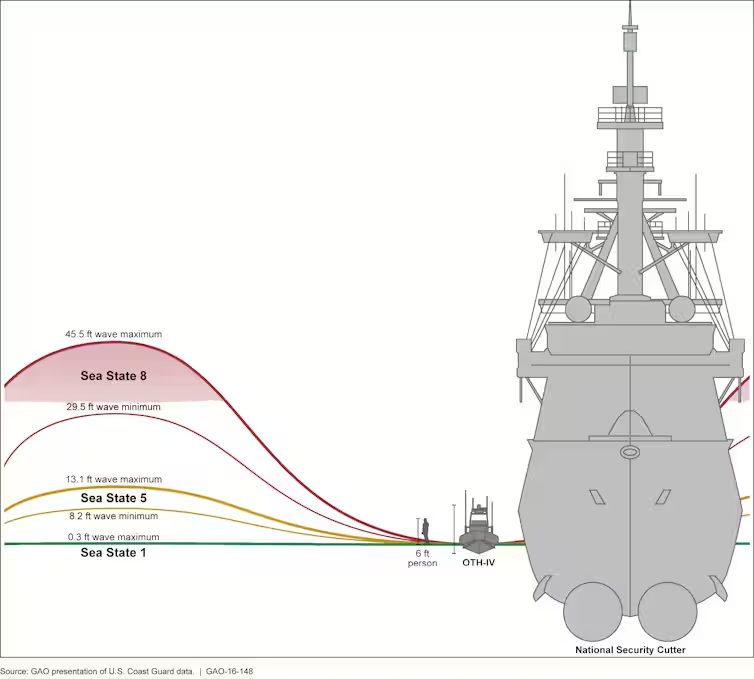8 Minutes
Rogue waves — extraordinary, isolated ocean waves that can exceed 20 meters (65 feet) — have long captured the imagination of mariners and scientists. Once regarded as maritime folklore, they are now documented phenomena that pose serious risks to ships, platforms and offshore infrastructure. A new analysis of 18 years of continuous high-frequency measurements from the Ekofisk oil platform in the central North Sea reframes how we understand the origins of these oceanic giants.
This study, published in Nature Scientific Reports, brings together an international team of oceanographers, statisticians and data scientists. Using the most comprehensive in-situ dataset of its kind — nearly 27,500 half-hour sea-state records spanning 2003 to 2020 — the research shows rogue waves are not inexplicable anomalies but emerge from well-defined physical processes in the open ocean.
Scientific background: From wind waves to extreme events
Under ordinary conditions, wind transfers energy to the ocean surface, producing a spectrum of waves that grow and interact over time and space. Over long fetches and durations, small ripples may evolve into large waves. Two competing frameworks have been proposed to explain extreme, localized waves in such a sea-state:
- Modulational instability: a nonlinear mechanism often observed in narrow, effectively one-dimensional waveguides. In laboratory channels and constrained wave tanks, modulational instability can concentrate energy into a single large wave.
- Constructive interference and quasi-determinism: a statistical framework, pioneered by Paolo Boccotti, that interprets extreme waves as the outcome of many linear and weakly nonlinear waves aligning in phase to produce a short-lived, predictable spatial-temporal waveform.
In open seas like the North Sea, waves approach from multiple directions and are not confined to a single propagation axis. The Ekofisk dataset allowed the team to evaluate which theoretical framework best fits real-world measurements across thousands of different sea states, including major storms such as the Andrea event of 2007.

Mission and measurement details: 18 years at Ekofisk
The core dataset for this investigation consists of high-frequency laser altimeter records taken at the Ekofisk platform. Measurements were recorded every 30 minutes, with each record spanning half an hour. In total, the dataset contains nearly 27,500 distinct sea-state segments. These records capture the instantaneous sea-surface elevation relative to mean sea level and include both calm conditions and intense storm events.
Complementary tools used in the analysis included statistical signal processing, pattern recognition techniques and machine-learning models to test theoretical predictions against observation. In one notable case, a platform camera captured a 55-foot (≈17 m) wave during a North Sea storm on 24 November 2023. That event provided a concrete example for applying quasi-determinism and AI-based pattern analysis to infer the rogue wave's formation.
Key discoveries: Constructive interference drives rogue events
Comprehensive statistical tests show that modulational instability — though relevant in constrained laboratory channels — does not reliably predict rogue-wave statistics in the multi-directional, open-sea conditions present at Ekofisk. Instead, the observed extreme waves are best explained by constructive interference acting within a quasi-deterministic framework.
Constructive interference occurs when several wave components temporarily align in phase, so their crests add together to produce a much larger crest. Two important factors amplify this effect in the ocean:
- Wave asymmetry: Ocean wave crests tend to be sharper and steeper than troughs are deep. This asymmetry biases constructive superposition towards producing high, narrow crests.
- Grouping: Ocean waves travel in transient groups or packets. When a favorable packet forms, a sequence of smaller waves can stack to create an exceptionally large crest that lasts for tens of seconds.
The study shows that rogue waves emerge from ordinary wave fields when many smaller waves line up. These events follow a quasi-deterministic spatial-temporal signature: the extreme crest has a reproducible waveform pattern in space and time but occurs at stochastic times because the required alignment is rare.
Why rogue waves don't grow without limit
In idealized mathematical models with minimal dissipation, the randomness that limits constructive growth can be reduced dramatically, implying theoretically enormous wave amplitudes — but with vanishingly small occurrence probability. The real ocean imposes practical constraints: as a crest grows it eventually breaks, spilling energy and preventing unlimited growth. Wave breaking establishes an effective physical ceiling on rogue-wave height and is a crucial mechanism that controls extreme-wave statistics in the field.

Applying quasi-determinism to observed events
The Ekofisk study applied Boccotti's quasi-deterministic theory to identify wave-group fingerprints in measured sea states. By tracking the wave group that precedes an extreme crest, researchers can reconstruct how constructive interference assembled the rogue event. In the 24 November 2023 storm case, combining quasi-determinism with an AI-based pattern recognition model indicated the 55-foot crest arose from repeated stacking of multiple smaller wave components rather than from a nonlinear focusing mechanism tied to channel confinement.
This interpretation implies that, in open-ocean situations where waves arrive from many directions, rogue waves are often 'just a very bad day at sea' — a transient alignment of energy produced by natural wave statistics rather than a separate, exotic instability.
Implications for engineering, prediction and safety
Recognizing constructive interference and quasi-determinism as primary drivers of rogue waves in open seas has practical consequences:
- Marine engineering: Ship and platform designers can use probabilistic models informed by quasi-deterministic signatures to better estimate extreme load scenarios. Knowing the typical spatial-temporal form of a rogue event allows more realistic structural and stability assessments.
- Forecasting and risk management: Wave-observing systems and numerical wave models can incorporate wave-group detection and pattern recognition to flag elevated short-term risk windows for offshore operations and shipping routes.
- Sensor and surveillance design: Targeted high-frequency instrumentation and camera systems, deployed at critical locations, can detect group patterns that precede rare cresting events and improve operational warnings.
Expert perspective and quote
Lead analysts on the paper note that the results shift our understanding of ocean extremes from mystical anomaly to emergent behavior of ordinary seas. As one researcher summarized: 'Rogue waves in the open ocean are not mystical outliers but the expected outcome when many ordinary waves briefly align. It's a probabilistic process with a recognizable spatial-temporal fingerprint.'
Related technologies and future prospects
Future work will combine longer-duration in-situ datasets, stereo-imaging of sea surfaces, and real-time AI detection to refine early-warning capability. Advances in directional wave buoys, LIDAR altimetry on platforms, and satellite-based wave spectral products can be fused to monitor wave-group evolution across larger areas. Improved physical parameterizations of wave breaking and energy dissipation will also enhance numerical models used for forecasting extreme-wave probabilities.
Conclusion
The 18-year Ekofisk analysis provides robust evidence that giant rogue waves in open-ocean settings most commonly arise from constructive interference and follow quasi-deterministic spatial-temporal patterns. While modulational instability explains extreme focusing in constrained laboratory channels, the open, multi-directional sea favors transient stacking of many ordinary waves. This insight refines risk assessment for maritime operations and points to concrete monitoring and modeling strategies to improve safety for ships and offshore platforms.
Source: theconversation


Leave a Comment